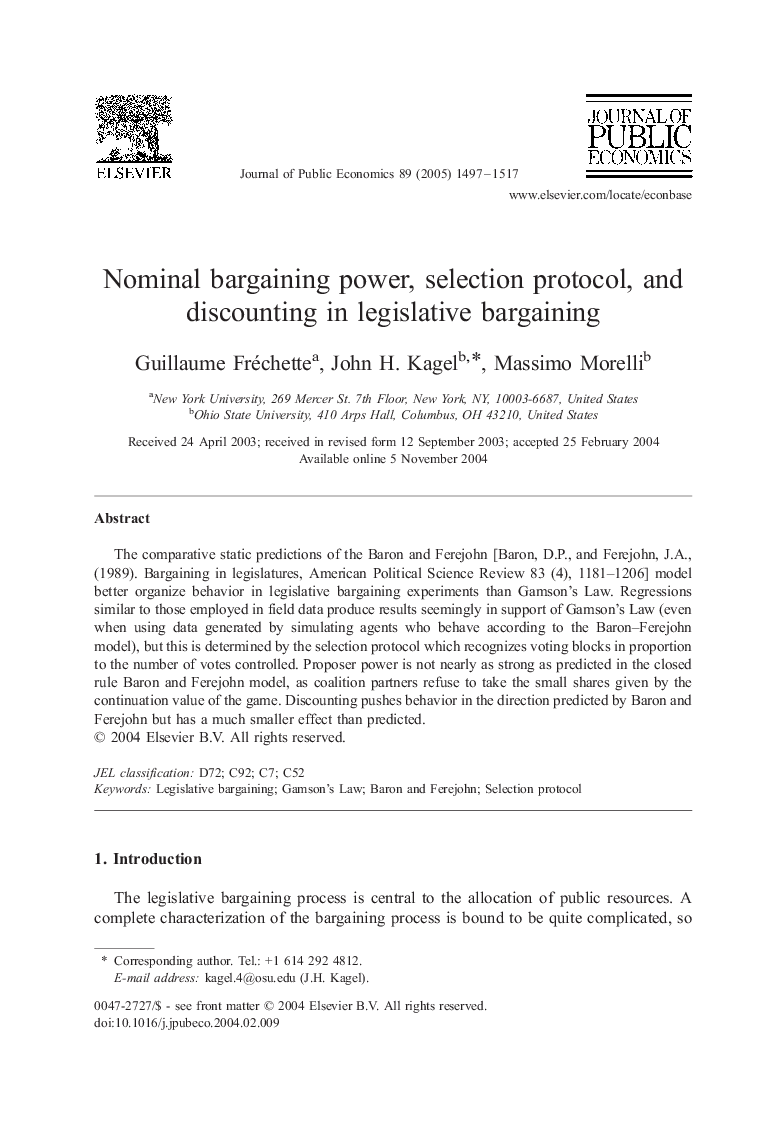| Article ID | Journal | Published Year | Pages | File Type |
|---|---|---|---|---|
| 10479347 | Journal of Public Economics | 2005 | 21 Pages |
Abstract
The comparative static predictions of the Baron and Ferejohn [Baron, D.P., and Ferejohn, J.A., (1989). Bargaining in legislatures, American Political Science Review 83 (4), 1181-1206] model better organize behavior in legislative bargaining experiments than Gamson's Law. Regressions similar to those employed in field data produce results seemingly in support of Gamson's Law (even when using data generated by simulating agents who behave according to the Baron-Ferejohn model), but this is determined by the selection protocol which recognizes voting blocks in proportion to the number of votes controlled. Proposer power is not nearly as strong as predicted in the closed rule Baron and Ferejohn model, as coalition partners refuse to take the small shares given by the continuation value of the game. Discounting pushes behavior in the direction predicted by Baron and Ferejohn but has a much smaller effect than predicted.
Keywords
Related Topics
Social Sciences and Humanities
Economics, Econometrics and Finance
Economics and Econometrics
Authors
Guillaume Fréchette, John H. Kagel, Massimo Morelli,
